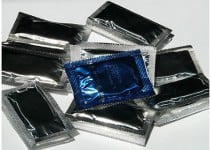Endometriosis is a common health problem among women in which the tissue that forms innermost lining of the uterus, is found outside the uterus.
This disease can occur at any time during a woman’s reproductive years, and it is often associated with severely painful menstrual cramps—although the disease can manifest without symptoms as well.
With endometriosis, the ovaries, bowel, and tissue lining of the pelvis are most commonly affected.
The pain caused by endometriosis can be severe, especially during your period, and it can cause issues with fertility as well. Fortunately, there are many treatment options available to help relieve symptoms and increase fertility.

Endometriosis Symptoms
The main underlying symptom of endometriosis is severe pelvic pain that is associated with your menstrual cycle.
The pain associated with endometriosis is often described as being worse than normal menstrual cramping, and the pain often increases over time. Some other common signs of endometriosis include:
- Painful periods: Pelvic pain and cramping may be intensified during your menstrual period and extend into your lower back and abdominal region.
- Painful intercourse: Pain during or after sex is indicative of possible endometriosis.
- Painful bowel movements or urination: Discomfort or pain while using the bathroom is mostly experienced during your menstrual cycle.
- Excessive period bleeding: Heavy periods or spotting is also an indication of possible endometriosis.
- Infertility: Endometriosis affects your ability to get pregnant.
While severe pain is often a symptom of endometriosis, this pain alone is not a clear indicator of the condition and it can be sometimes confused with other pelvic diseases such as pelvic inflammatory disease and ovarian cysts.
Some women may experience no pain if their endometriosis is already extensive, meaning that there are large areas affected. The only way to know for sure if you have endometriosis is to get tested by a doctor or to have surgery.
Causes of Endometriosis
The exact causes of endometriosis are not known. However, women who have short menstruation cycles or long menstrual period flows are more likely to develop endometriosis.
Retrograde menstruation: It is believed that endometriosis is most likely caused by retrograde menstruation, in which the menstrual blood that contains endometrial cells flows through the fallopian tubes and the pelvic cavity instead of exiting out of the body[1]. It is possible, however, to have some retrograde flow and not develop endometriosis.
Other factors such as genetics, immune system issues, hormones, and surgery may also play a role in the development of endometriosis in women.
Endometriosis is likely to develop if you began getting your period at an early age, have regularly heavy period flows, have long or short menstrual cycles, or if you have a close relative that has been diagnosed with endometriosis.
Most women develop this condition in their 30s and 40s. It is important to be aware of the symptoms of endometriosis so you can see your health care professional immediately.
Endometriosis does have various risks and complications associated with it, including an increased risk of infertility and higher rates of ovarian cancer[2].
In order to test for endometriosis, your health care provider will likely use imaging tests, such as ultrasounds and MRI systems, as well as a pelvic exam; however, the only way to know if you have endometriosis for sure is through surgery.
Endometriosis Treatment
After your doctor has diagnosed your endometriosis, there are usually different approaches of treatment available.
The treatment plans typically depend on the severity of your symptoms and your desire to get pregnant in the future.
Pain medication
Over-the-counter pain relievers, such as non-steroidal anti-inflammatory drugs like ibuprofen and naproxen, are often recommended by your doctor to help relieve the pain associated with your menstrual cycle.
Hormone therapy
Supplemental hormonal therapy is also an effective treatment for reducing pain by slowing the growth of the endometrial cells and preventing new implants of endometrial tissue.
Hormonal therapy isn’t a cure for endometriosis, however, it is mainly used to help relieve symptoms.
Surgery
Women with endometriosis who wish to become pregnant may opt to have surgery to remove the endometriosis while preserving the uterus and ovaries. Those with severe pain that cannot be remedied by over the counter medication and other therapies can also opt to have the surgery as well.
Although the surgery is successful at reducing the pain and negative impacts of endometriosis, there is a definite chance that the condition will return.
References
- https://www.endofound.org/endometriosis-research-from-sampson-to-the-21st-century-serdar-bulun-md
- https://www.ncbi.nlm.nih.gov/pmc/articles/PMC5563086/




I’m not sure if I should see a doctor or not as I seem to be in a lot of discomfort with my stomach the pain seems to come and go I feel bloated lot of the time and feel full even if I have not eating I also get pain in my lower back and sex hurts a lot could this be a sign of endometriosis
Hi there Carly, this is indicative of many conditions that could range from endometriosis to cervical cancer. See your doctor ASAP.